The day dawned cold and clear, but an east wind predicted change. My plan was to return to Kensington again, this time with a good field guide, to see if I could sort out the new visitors on Wildwing Lake. Redheads or Canvasbacks? Ringnecks or coots?
I’d consulted my big desktop bird book, Reader’s Digest Book of North American Birds, inherited from my Mom and Dad, but it was too big for my back pack, and my old reliable Peterson’s Eastern Bird guide was at the cottage. So I headed for my local friendly Wild Birds Unlimited on Woodward Ave. in Royal Oak, MI.
The Brilliant Assistant Manager Christl recommended Sibley’s Ducks of Eastern North America. It was a great recommendation! It has just enough detail to help with an ID, is waterproof, and folded up to fit in a pocket. I added a big seed cake and a few feeder gadgets, picked up the Horsewoman, and we were off!
Christl at Wild Birds Unlimited had suggested I try filming the birds in slo-mo video, but first I wanted to get a solid ID on the waterfowl. Binoculars are the key to birding. The usual suspects were swimming by the boardwalk. Mallards, mostly. But another group of dabblers was mixing in with the mallards. These were a bit smaller. I consulted the guide.
Gadwalls! I’d never taken the time to ID them before. They’re a bit plain, but different!
Now I was excited! A new species under my belt! I headed off the boardwalk onto the trail.
The Sandhill Cranes were guarding the path, and gave me a cold eye as I passed. Yes they have a hollow spot on their bills! You can see right through! I’m guessing this is where their sense of smell is focused. Not sure. I couldn’t find any more info on the internet.
As I proceeded around the lake, stopping at outlooks, the sun moved directly behind me. Now everything had lined up. I found a bench and settled in with my guide, binoculars, and notebook.
There were Ring necks everywhere! Hundreds of them, and they were still coming in, landing in pairs from all directions! I wished I had one of those fancy cameras on a tripod.
The field guide said “Ring-necked Duck. Uncommon; usually in small flocks on wooded freshwater ponds.” Well these guys were having a reunion! Nothing small about this flock! I could see the tell-tale white “spur” around the neck of the males, but even more telling were the white rings on the bill, one near the tip, and the other outlining where the bill ends and the feathers begin. Unmistakeable. The females are a bit drab but pretty never the less, with a pale “spur” and a faint ring on the bill.
Among the Ring-necks were several pair of larger birds with solid dark heads. Either Canvasbacks or Redheads:
Because they seemed a bit larger, I thought Canvasbacks. And there may have been some of those. But once again the guide told the difference. Redheads. The bill of the male was light, not black, with a bit of a black tip.
I kept going around the lake. There was another unusual pair of dabblers. The male had a white forehead and light colored bill. And his bill had a black tip! There was only one of these males amidst all the Ring necks: this pair was slightly bigger.
I consulted the guide:
American Widgeon! A first for me! The female had a warm rusty colors, slightly mottled, while the male sported a bright white wing patch and sharp black tail with white undercoat forward. But the most dramatic marking was the face of the male. When he looked straight he had a white face. The big book says they breed in tall weeds north and west of here, and are just passing through to their winter haunts down south.
I continued round the lake to the windier western side. The east wind was bringing in some high cloudiness that threatened to fade out the blue. Though the Sun did its best, it’s too low now in the sky to have enough power to warm it up much, even without the clouds and wind.
Above you just make out some Ringnecks, sprinkled like pepper, mostly to the left of the white blotches, which are swans. The Ringnecks extended all over the lake, but too far from shore for me to capture with my IPhone.
Now, as I type this from my bench high up above the lake, a chickadee drops down in front of me, cocking his head inquisitively. Satisfied with my duck ID, I decide to move further up the trail before getting out the bird seed.
Enough study, let the fun begin~!
This chickadee was a bit greedy, don’t you think?
First the brave titmouse, then another hungry chickadee.
The wind was picking up and the temperature was dropping, so I headed into the Nature Center to warm up.
Meet Ranger, the Red-tailed Hawk! I’ll tell his story tomorrow!
Thanks so much for traveling along~! Lots in store so please stay tuned!
Note: Pictures from the Sibley’s Ducks of Eastern North America are subject to copyright, 2017, David Allen Sibley. The guide is highly recommended and available at Wild Birds Unlimited.
PS: Jane Ratcliffe does amazing interviews. This one was special:


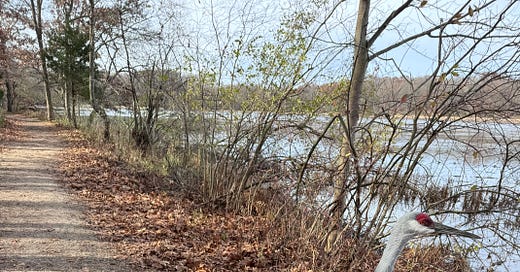



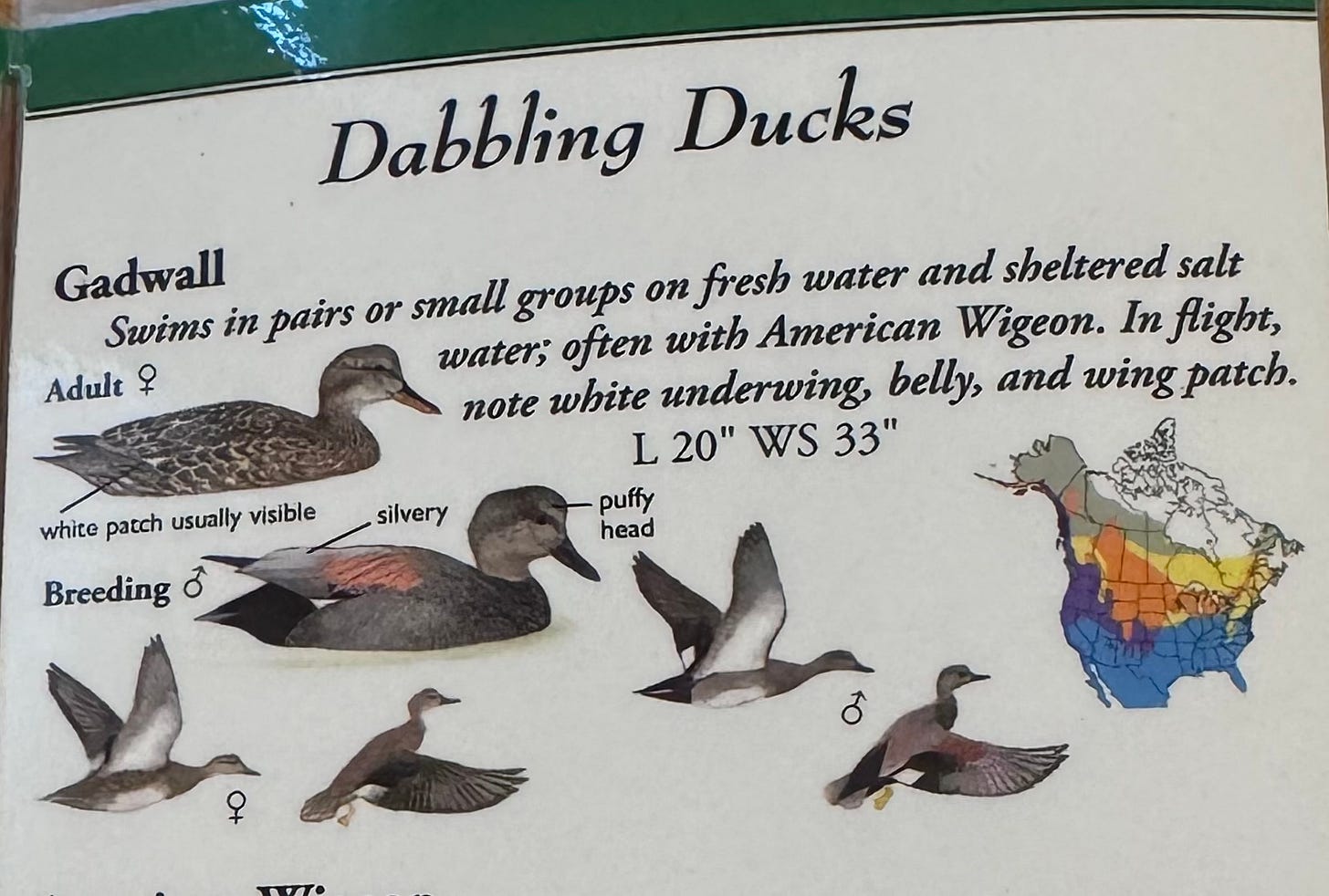
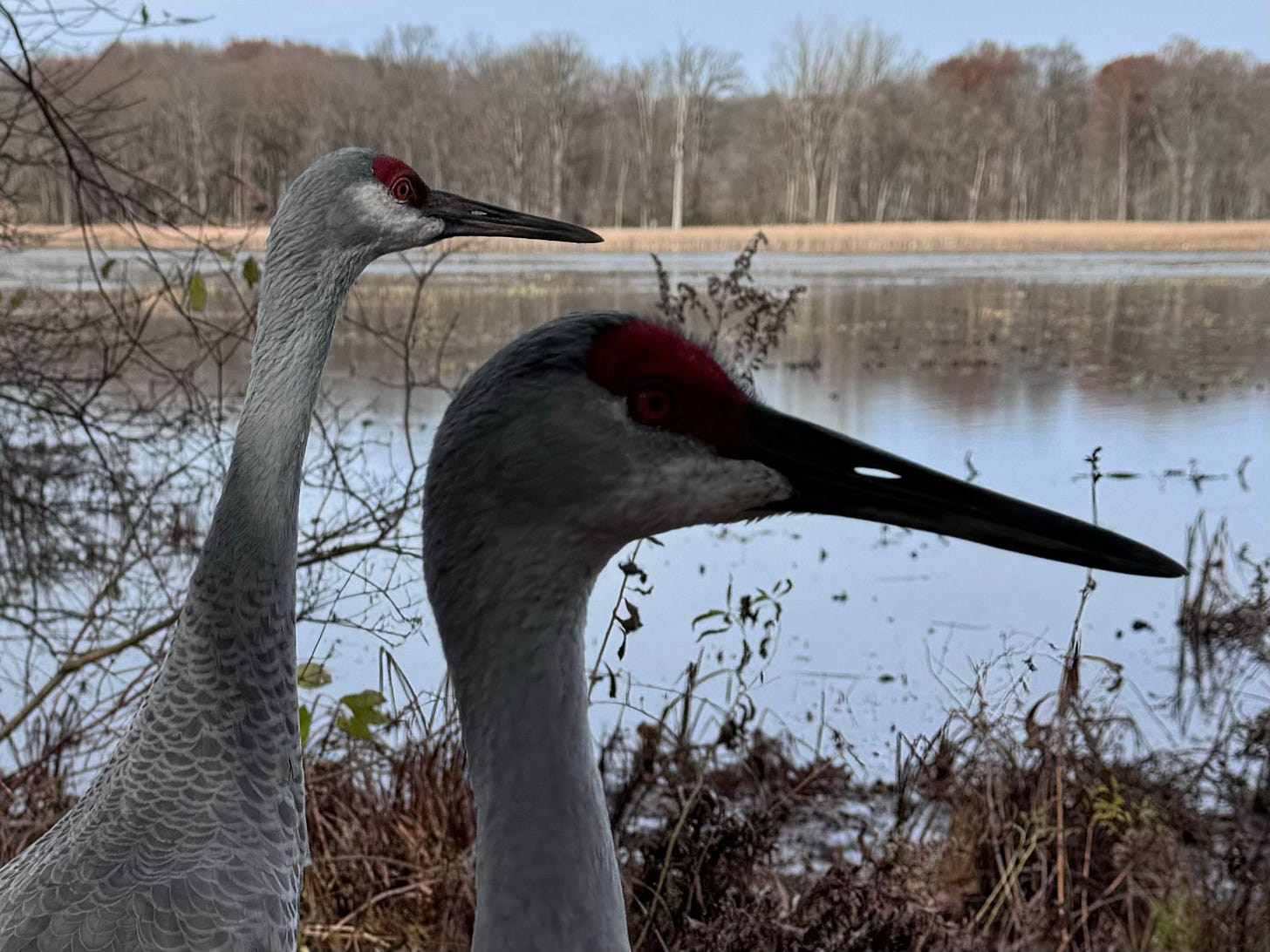

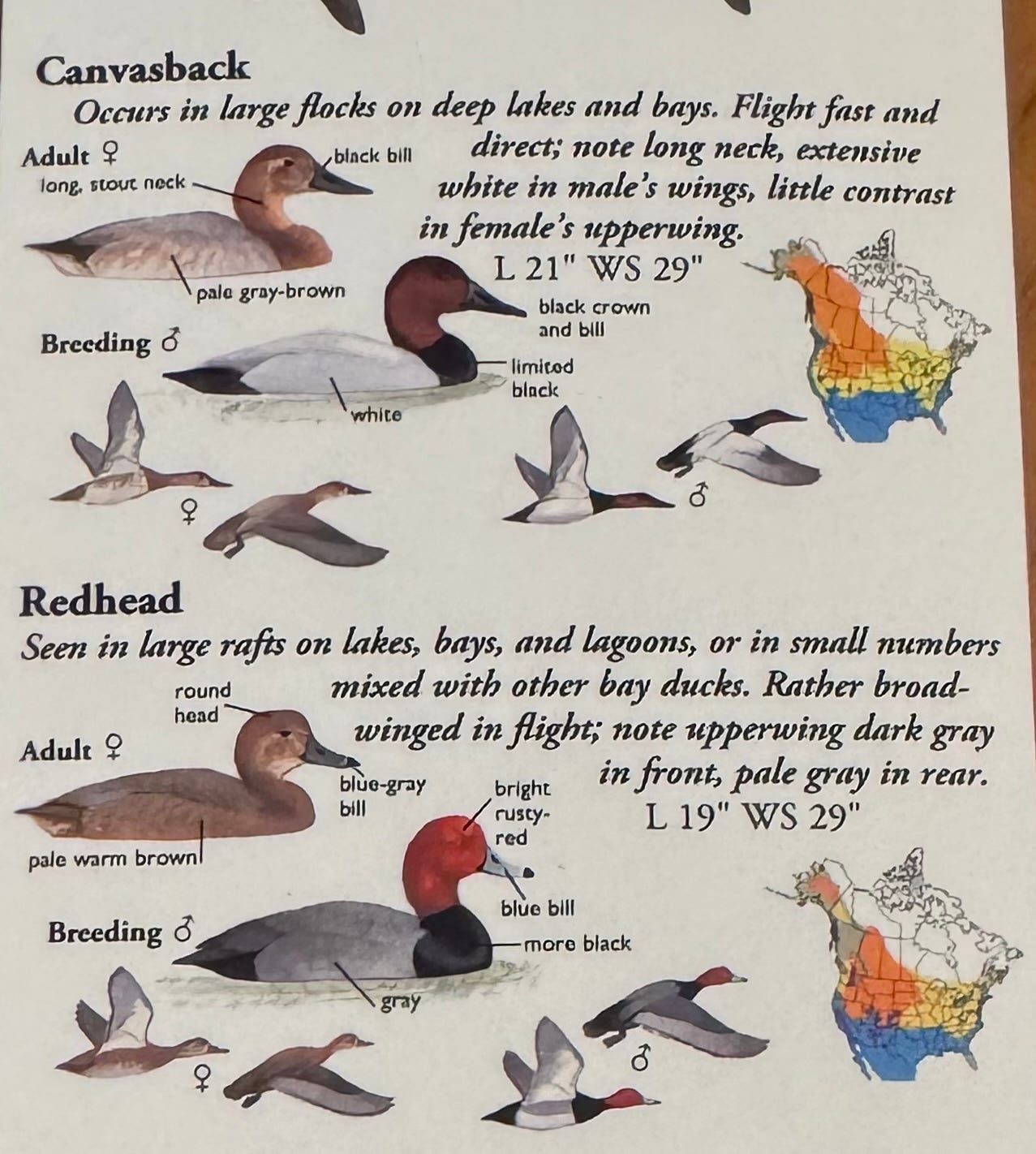
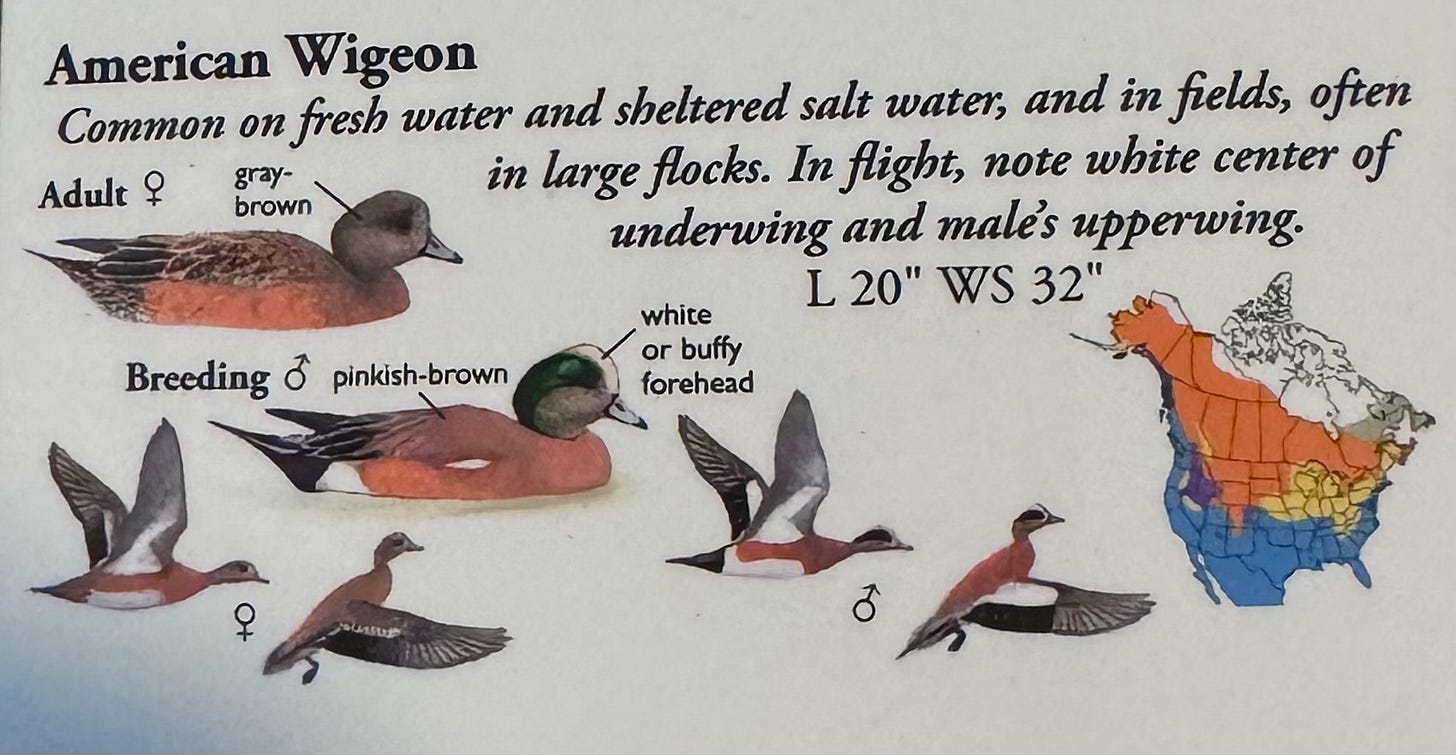
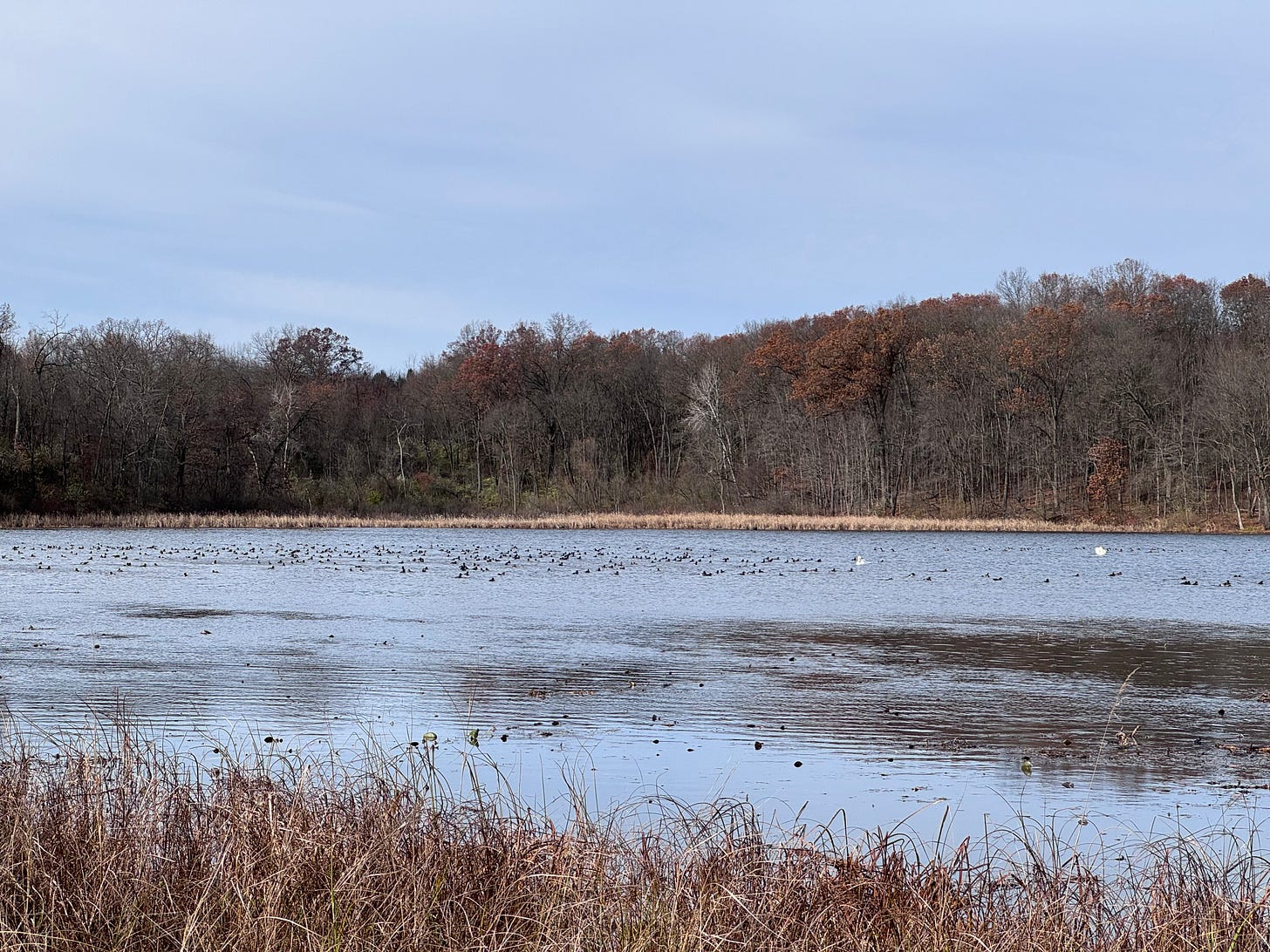
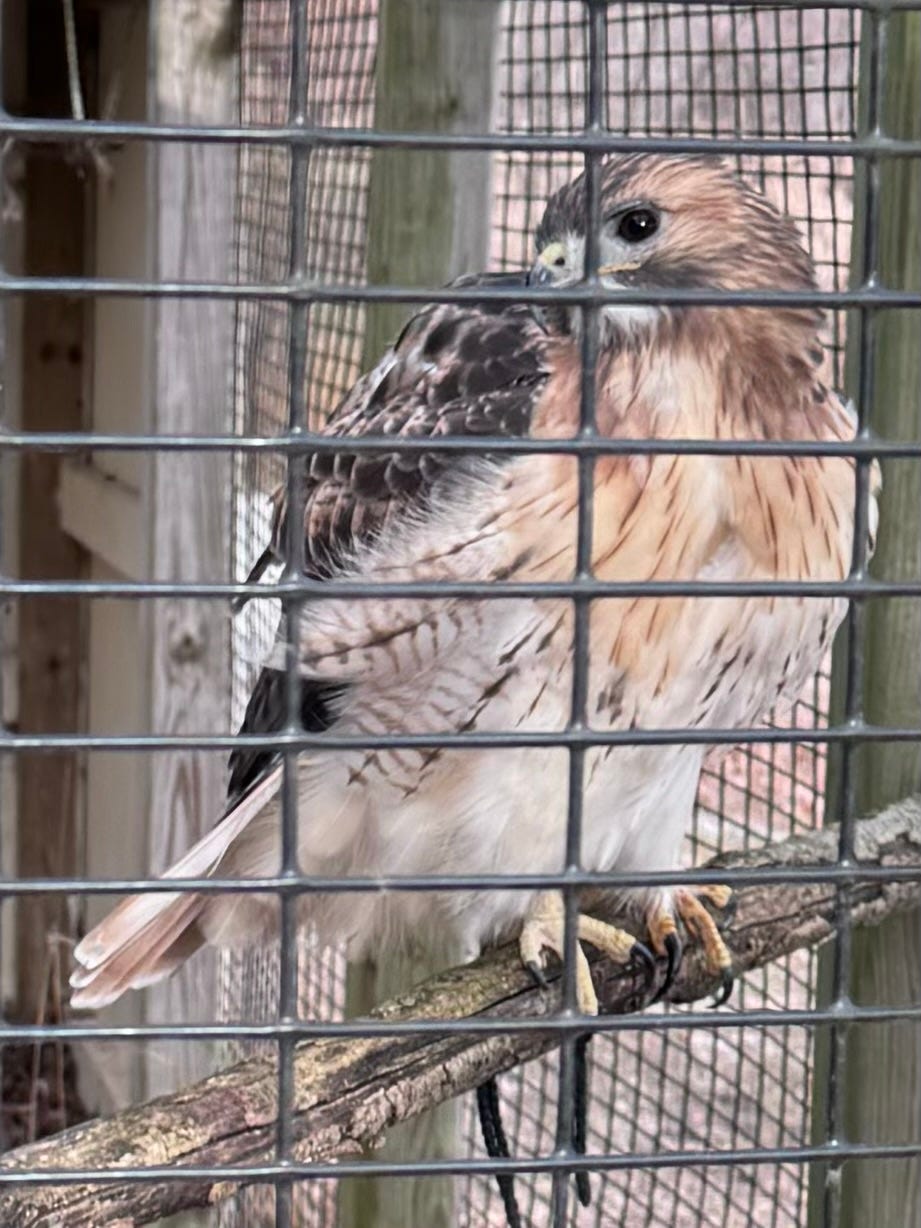

Oh my goodness, David! I don't think I've ever seen wild birds eat out of someone's hand like that. That is remarkable. You must be a Bird Whisperer! Beautiful. I can hardly wait to read what you have to share about the bird in the cage. Best to you!
What a wonderful world!